Did you know that some dogs can produce up to a cup of saliva daily? While slobbering is natural for many breeds, sudden or extreme drooling often leaves owners puzzled. This common behavior ranges from harmless to health-critical, making it essential to recognize when to act.
Breeds like Mastiffs and Saint Bernards are prone to drooling due to loose facial skin. Excitement, mealtime anticipation, or dental discomfort can also trigger saliva production. However, persistent ptyalism—the medical term for excessive drooling—may signal oral injuries, gastrointestinal issues, or systemic diseases.
Pet caregivers should monitor accompanying symptoms. Is their companion pawing at their mouth? Avoiding food? These signs, paired with heavy drooling, warrant a vet visit. Early detection helps address problems like tooth decay or toxin exposure before they escalate.
This guide explores behavioral quirks, dental health red flags, and hidden conditions linked to abnormal drooling. Upcoming sections will break down actionable steps to manage saliva levels and improve your pet’s comfort. Stay tuned for vet-approved strategies tailored to your furry friend’s needs.
Understanding Normal Dog Drooling Behavior
Saliva plays a crucial role in canine digestion, breaking down food and protecting oral health. Typical drooling occurs during routine activities like mealtime prep or play. Many pets release extra saliva when smelling treats or hearing kibble hit their bowl—a natural response to stimuli.
Breed anatomy heavily influences slobber patterns. Bloodhounds and Newfoundlands often drip saliva due to loose jowls that can’t contain moisture. These breeds might leave puddles after drinking water, which owners should expect as part of their care routine.
Healthy drooling stays consistent with familiar triggers and stops once the stimulus passes. Occasional dribbles during car rides or visits to the park fall into this category. Wiping your companion’s muzzle after meals prevents skin irritation and keeps their fur clean.
Concerns arise when saliva flow becomes excessive without obvious causes or persists for hours. Sudden changes in thickness, color, or odor signal potential health issues. Later sections will detail how to spot these red flags and when to consult a vet.
Why is my dog drooling so much? Understanding the Signs
Distinguishing between normal and excessive drooling hinges on observing specific behavioral and physical cues. Healthy saliva flow typically aligns with predictable triggers like mealtimes or play. Persistent dripping that soaks bedding or floors often signals underlying issues needing attention.
Changes in saliva texture or appearance provide critical clues. Thick, stringy drool or discolored discharge may indicate oral infections or dental disease. A sudden metallic odor could point to blood from gum injuries or fractured teeth.
Watch for pawing at the muzzle or repeated lip-licking motions. These behaviors often accompany mouth pain from stuck objects or ulcerations. Difficulty swallowing food, especially when paired with gagging, suggests throat obstructions requiring urgent care.
Even subtle shifts in routine matter. A pet that drools excessively during car rides might experience motion sickness, while sudden avoidance of chew toys could reveal jaw discomfort. Track appetite changes—reluctance to eat hard kibble sometimes stems from tooth sensitivity.
Veterinarians recommend documenting episodes with photos and notes about duration. This evidence helps pinpoint whether triggers relate to anxiety, illness, or environmental factors. Early intervention prevents minor issues from escalating into complex health conditions.
Breed Tendencies: Why Some Dogs Drool More Than Others
Anatomy plays a surprising role in canine drooling patterns. Loose facial skin and saggy lips in certain breeds create natural channels for saliva escape. Saint Bernards and Mastiffs, for instance, have jowls that trap moisture before releasing it in dramatic drips—a design quirk that turns simple head shakes into splash zones.
Bloodhounds and Bulldogs showcase how physical traits dictate slobber levels. Their pendulous flews (upper lips) lack tight seals, allowing saliva to pool and spill during activities. These breeds often require drool rags as part of daily care routines to manage constant moisture around their mouths.
While excessive drooling in these dogs is typically harmless, it demands consistent maintenance. Wrinkly-faced pets need regular face wiping to prevent skin infections in folded areas. Owners should check for food debris trapped in lip folds that might irritate sensitive skin over time.
Understanding breed-specific tendencies helps distinguish normal behavior from potential health concerns. Though heavy drooling is expected in some dogs, sudden increases or changes in consistency still warrant attention. Upcoming sections explore when saliva production crosses into problematic territory linked to disease or discomfort.
Mouth and Throat Issues That Lead to Excessive Drooling
Oral health problems rank among the top triggers for unexpected drooling in canines. Fractured teeth, advanced tartar buildup, and gum infections often irritate sensitive mouth tissues, triggering excess saliva production. Dogs with periodontal disease may paw at their faces or avoid chew toys due to persistent discomfort.
Foreign objects like bone fragments or wood splinters can lodge between teeth or under the tongue. These irritants create localized inflammation, prompting pets to drool excessively while trying to dislodge the material. Regular mouth checks after meals help spot stuck debris before it causes complications.
Watch for warning signs like bright red gums, brown plaque deposits, or foul breath. These symptoms often indicate the need for professional dental cleaning. Routine brushing with vet-approved toothpaste reduces bacterial growth and maintains oral health between vet visits.
Severe cases—such as abscesses or oral tumors—require immediate veterinary attention. Delayed treatment risks spreading infections to vital organs. For breeds prone to drooling, soft bandanas absorb excess moisture and prevent skin irritation around the muzzle.
Owners should gently lift their pet’s lips weekly to inspect for abnormalities. Early detection of cracked teeth or swollen gums allows for simpler, less costly interventions. Pair these checks with annual dental exams to keep your companion’s mouth pain-free and functional.
Gastrointestinal Troubles and Tummy-Related Drooling
Dogs often communicate discomfort through physical signs like excessive drooling. Digestive upset frequently triggers this response, especially when nausea or motion sickness strikes. Car rides may leave your companion dribbling saliva due to inner ear disturbances – a common issue pet owners overlook.
Ingestion problems escalate quickly. Swallowed socks, toy stuffing, or toxic plants irritate the stomach lining, causing both vomiting and heavy drooling. Watch for restlessness or repeated lip-licking after meals – these behaviors often precede gastrointestinal distress.
Chemical exposures demand immediate action. Household cleaners, antifreeze, or chocolate can trigger excessive salivation within minutes. Pair this symptom with diarrhea or lethargy? Contact your vet without delay. Early intervention prevents toxins from causing organ damage.
Monitor for patterns. Does your pet drool only during travel? Try shorter trips with ventilation breaks. For digestive issues linked to dietary mishaps, withhold food for 12 hours before reintroducing bland meals. Persistent symptoms lasting over 24 hours warrant professional care to rule out obstructions or infections.
Preventive measures reduce risks. Secure trash cans and limit access to chew hazards. Discuss anti-nausea medications with your vet if motion sickness persists. Remember – a drooling dog with tummy troubles needs your calm attention and swift decision-making.
Stress, Anxiety, and Behavioral Triggers of Drooling
Emotional distress in canines often manifests through physical symptoms like excessive salivation. High-stress situations—such as vet appointments or moving homes—activate the nervous system, triggering saliva production even without food present. Dogs may drip drool during thunderstorms or when left alone, signaling their discomfort through this visible response.
Common anxiety triggers include loud noises, unfamiliar guests, or disrupted routines. A pet that pants heavily while pacing and dripping saliva likely feels overwhelmed. Pair these signs with lethargy or appetite changes, and you’ve got clear indicators of stress-related drooling.
Behavioral therapy can help anxious pets. Gradual exposure to stressors, paired with positive reinforcement, reduces panic responses. Calming aids like pheromone diffusers or pressure wraps offer additional support during transitions.
Create predictable routines to minimize uncertainty. Feed meals at consistent times and maintain regular walk schedules. For severe cases, veterinarians may recommend anti-anxiety medications alongside training plans. Gentle handling and patience build trust, helping your companion feel secure in changing environments.
When Drooling Signals a Serious Health Issue
While occasional drool puddles might seem harmless, certain warning signs demand urgent veterinary attention. Sudden excessive saliva paired with neurological symptoms often indicates life-threatening conditions. Rabies-infected animals, for example, may drool heavily while showing aggression or disorientation.
Heat stroke creates critical emergencies. Pets left in hot cars or overexerted in summer months might pant excessively while dripping thick saliva. Look for bright red gums, rapid heartbeat, or collapse – these require immediate cooling measures and emergency care.
Neurological disorders present distinct patterns. Seizure activity often involves foamy drool alongside muscle tremors or loss of consciousness. Difficulty swallowing food or water could signal nerve damage or throat paralysis needing specialized treatment.
Key red flags requiring same-day vet visits:
- Drooling with vomiting or diarrhea lasting over 12 hours
- Saliva tinged with blood or unusual colors
- Sudden behavior changes like hiding or unprovoked aggression
Never ignore timing clues. Toxin exposure symptoms typically appear within 2-6 hours. If your pet drools excessively after exploring the garage or yard, contact animal poison control immediately. Quick action often prevents irreversible organ damage.
Documenting symptom progression helps veterinarians prioritize tests. Note when drooling started, environmental changes, and any swallowed objects. Early intervention transforms outcomes for conditions like gastric torsion or kidney failure.
Veterinary Diagnosis and Treatment Options for Drooling Dogs
Veterinarians approach excessive drooling like detectives piecing together clues. They start with a detailed oral exam, checking for cracked teeth, gum inflammation, or foreign objects. Digital X-rays often reveal hidden issues like root abscesses or jaw fractures that contribute to saliva overflow.
Bloodwork helps identify systemic causes. Liver disease, kidney dysfunction, or infections often show up in chemistry panels. For throat obstructions, vets might use endoscopy—a tiny camera that visualizes hard-to-see areas without invasive surgery.
Treatment plans vary based on findings. Dental cleanings under anesthesia remove plaque buildup causing irritation. Antibiotics tackle infections, while anti-nausea medications address stomach-related drooling. Severe cases like oral tumors may require surgical removal followed by radiation therapy.
Early vet visits prevent minor issues from becoming emergencies. A dog avoiding chew toys today might have a fractured molar needing extraction tomorrow. Share detailed observations—when drooling spikes, what triggers it, and any behavior changes.
Open communication streamlines care. Vets appreciate videos of episodes and notes about appetite shifts. Collaborative problem-solving leads to tailored solutions, whether it’s adjusting medications or modifying feeding routines. Timely action keeps pets comfortable and reduces long-term health risks.
Practical Home Remedies and Tips to Control Drooling
Managing excess saliva starts with simple daily habits. Keep a stack of absorbent bandanas handy for breeds prone to slobbering. These colorful accessories catch drips while adding personality to your pet’s look.
Create a face-cleaning routine using soft, damp cloths. Gently wipe folds around the muzzle after meals and outdoor play. This prevents food particles from irritating skin and reduces odor-causing bacteria.
Oral care matters more than many realize. Brush teeth three times weekly with enzymatic toothpaste. Offer dental chews approved by the Veterinary Oral Health Council to minimize plaque buildup linked to excessive saliva production.
Monitor patterns for one week. If drooling decreases with consistent care, you’re on track. Persistent issues despite these efforts? Schedule a veterinary dental exam to rule out hidden infections or tooth fractures.
Remember – these strategies work best alongside regular checkups. Pair home care with professional guidance for pets needing extra support. Simple adjustments create cleaner living spaces and happier, more comfortable companions.
Wrapping It Up: Keeping Your Pet Healthy and Happy
Recognizing the balance between natural behavior and health alerts transforms how owners support their companions. Typical drooling during meals or play differs from persistent puddles paired with lethargy or appetite changes. Monitoring patterns helps distinguish harmless quirks from urgent concerns.
Consistent observation remains key. Note shifts in saliva consistency, energy levels, or interaction habits. Simple daily checks—like inspecting gums or wiping muzzles—build preventive care routines that catch issues early.
Partner with your veterinarian through regular exams and prompt consultations. Many conditions linked to excessive drooling improve dramatically when addressed quickly. Trust your instincts—if something feels off, professional guidance brings clarity.
Empowered caregivers create thriving pets. Combine home care strategies with expert insights to maintain comfort and confidence. Your attentiveness today builds a foundation for countless joyful tomorrows.
For tailored advice, schedule a checkup to discuss your companion’s unique needs. Knowledge transforms worry into action, ensuring every wagging tail stays healthy and bright.
FAQ
How can I tell if my dog’s drooling is abnormal?
Watch for sudden changes in drool quantity, thick/stringy saliva, or drooling paired with symptoms like lethargy, vomiting, or difficulty swallowing. Breed tendencies matter too—compare to your dog’s usual patterns.
Which dog breeds are prone to heavy drooling?
Breeds like Saint Bernards, Bloodhounds, and Mastiffs have loose facial skin that traps saliva, causing natural drooling. Short-nosed breeds (Bulldogs, Boxers) may drool more due to jaw structure.
Can dental problems cause excessive drooling?
Yes. Gum disease, broken teeth, or oral tumors often lead to pain-induced drooling. Check for red gums, bad breath, or reluctance to eat. Regular vet dental exams help catch issues early.
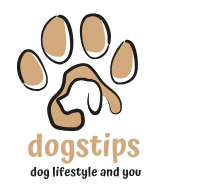
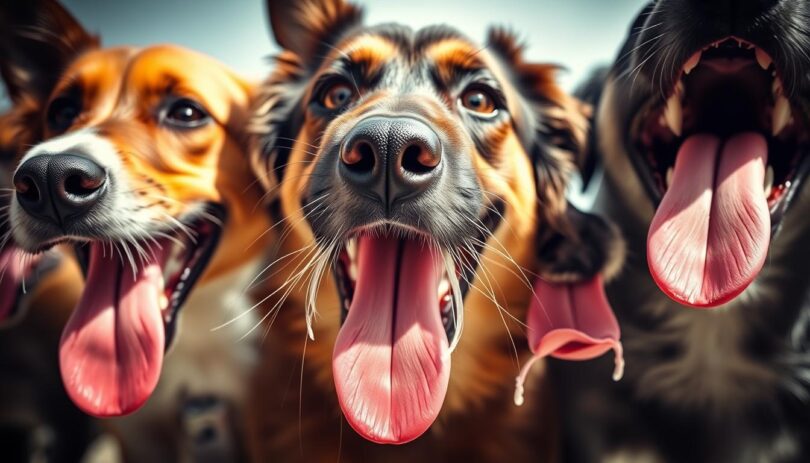
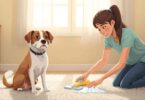


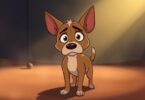

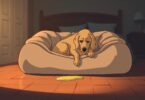
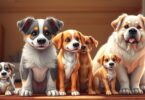
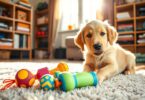
Leave a Comment